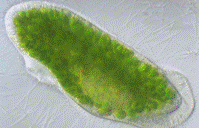Biological Sciences, School of

School of Biological Sciences: Faculty Publications
ORCID IDs
Shivani Jadeja http://orcid.org/0000-0001-9498-6322
Document Type
Article
Date of this Version
2017
Citation
Jadeja S, Tenhumberg B. (2017) Phytophagous insect oviposition shifts in response to probability of flower abortion owing to the presence of basal fruits. Ecology and Evolution. 7(21):8770–8779. https://doi.org/10.1002/ece3.3426
Abstract
Phytophagous insects use a wide range of indicators or associated cues to avoid laying eggs in sites where offspring survival is low. For insects that lay eggs in flowers, these unsuitable sites may be created by the host plant’s resource allocation to flowers. In the sequentially flowering host plant, Yucca glauca, late-opening distal flowers are more likely to be aborted in the presence of already-initiated basal fruits because they are strong resource sinks. If flowers are aborted, all eggs of the phytophagous insect, Tegeticula yuccasella, within the flower die. We used the phytophagous insect T. yuccasella that lays eggs in and pollinates host plant Y. glauca flowers to test the hypothesis that phytophagous insect females are less likely to invest eggs in host plant flowers if basal fruits are present because they are more likely to be aborted. We also investigated potential predictors of arrival of T. yuccasella at inflorescences at the onset of flowering. These factors may influence a phytophagous insect’s decisions to select oviposition sites. We carried out a behavioral experiment using wild-caught T. yuccasella females on manipulated inflorescences with distal flowers with basal fruits and without fruits. As potential predictors of T. yuccasella arriving at inflorescences, we used floral display size and day of onset of flowering. In support of our hypothesis, our experimental results showed that T. yuccasella was significantly less likely to oviposit in distal flowers on inflorescences with basal fruits. We also found that T. yuccasella arrival was higher at inflorescences with larger floral display size and earlier in the flowering season. These findings uncover a novel indicator of unsuitable oviposition sites—the presence of basal fruits, that phytophagous insects use to make oviposition decisions. Further, our study contributes to the growing body of evidence that shows that females prefer sites that increase the probability of survival of their offspring.
Included in
Behavior and Ethology Commons, Biology Commons, Desert Ecology Commons, Entomology Commons, Plant Sciences Commons


Comments
This is an open access article under the terms of the Creative Commons Attribution License.